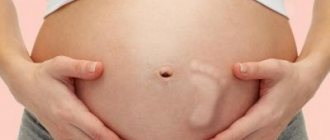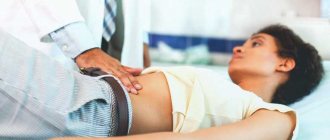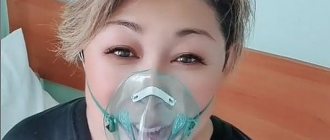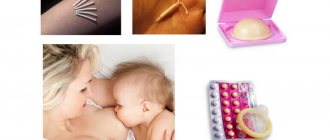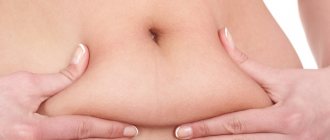Typically, books on child care describe in great detail how to behave with a newborn, and give almost no advice to the mother about recovery after childbirth. New guidance for children from birth to 6 months fills this gap. We talk about the sensations that a woman may experience in the first three weeks after giving birth, and answer popular questions: how many days after birth will the discharge stop, the stitches heal, the stomach will tighten and it will be possible to do simple gymnastics.
First week after birth
Bleeding after childbirth is normal and will be heavier than during your normal period. Use sanitary pads rather than tampons to minimize the risk of infection. If you notice a clot larger than 3 cm in diameter on the pad, tell your nurse - this may mean that part of the placenta remains in the uterus.
The so-called postpartum blues (mild manifestations of postpartum depression ) affects about 80% of women, so be prepared for the fact that around the fifth day you will want to cry. This should go away when the sudden changes in hormones stop. Lack of sleep can make this condition worse, so if you can take a nap during the day, it will help a lot.
A temperature above 38ºC may indicate an infection, although some women feel chills and their temperature rises when milk replaces colostrum around the third day. If you have a high temperature, talk to your nurse to find out if you are okay.
When your milk comes in (usually between the third and fifth day), your breasts may become firm. Frequent feeding of the baby to the breast will bring relief. Wrapping yourself in a warm cloth and taking a warm bath will also help milk flow freely and make your breasts softer.
You may also experience a painful spontaneous milk release when, for example, your baby cries. For some women, this causes a sharp burning sensation in the chest, but it goes away quickly and after the fifth week it will stop appearing altogether.
If you had a caesarean section , a small amount of fluid may leak from the incision. This is nothing to worry about, but if the discharge continues for more than a day, tell your nurse because the stitches can sometimes come apart.
If you've had an episiotomy (a surgical cut to widen your vagina for childbirth) or have had a tissue tear, your stitches will likely be sore for the rest of the week and you may need pain relief. Paracetamol is safe for nursing mothers. If you need something stronger, try paracetamol with codeine (which is also safe), although it may cause constipation. The pain can be relieved by sitting on an ice pack, or try special rubber rings made for women in labor. Such rings can be bought in pharmacies.
Hemorrhoids that appear during childbirth can also be very painful, and if a woman had hemorrhoids before childbirth, then pushing only made them worse. The good news is that even large lumps will go away on their own within a few months of giving birth. In the meantime, avoid constipation and don't stand for too long, as this will only make your condition worse. Ask the pharmacy for some cream that will help reduce bleeding and relieve pain. Sometimes sutures can make it difficult for blood to flow freely, which will increase your discomfort. Try doing pelvic floor exercises and tightening your anus. And be sure to see a doctor if you really feel unwell.
You may feel cramping in your uterus while breastfeeding because hormones stimulate your uterus to contract so it returns to its normal size. If the pain is very severe, you can also take paracetamol.
Urination will probably feel like a burning sensation for a couple of days. Try running warm water over yourself while you pee, or you can try peeing while sitting in a warm bath. If discomfort continues for more than two days, talk to your nurse to rule out a urinary tract infection.
your first bowel movement after giving birth can be painful, especially if you have stitches. But the best advice is to just deal with it: it's actually not as bad as you think, and the stitches won't come apart. If you have not gone to the toilet in four days after giving birth, drink plenty of water and prune broth.
Why twist your nipples and put pressure on your stomach after childbirth?
You were probably very surprised when, immediately after giving birth, the midwife asked you to twist your nipples with such force, as if you were quickly winding an old mechanical alarm clock. This unpleasant procedure is necessary for the body to splash out a large dose of oxytocin, a hormone that provokes uterine contractions.
A sharp uterine contraction should tear off the placenta, and after the placenta is released, the woman in labor immediately begins to experience lochia - postpartum discharge from a huge abrasion that formed at the site of separation of the placenta from the uterus.
In the first hours after birth, the midwife may return to apply firm pressure to the abdomen. She doesn’t want to cause you unnecessary suffering, but she makes sure that the accumulated lochia comes out faster.
Oxytocin provokes contractions for several days, so the size of the wound quickly decreases: the torn blood vessels are healed with blood clots. If the baby actively sucks the breast, then you will feel strong uterine contractions, abdominal pain, and the portions of lochia will be very abundant.

If you have difficulty releasing oxytocin naturally, you will be given an injection of the hormone. This usually happens:
- at the birth of twins or a very large baby;
- with polyhydramnios, as a result of which the uterine walls have lost their elasticity;
- there is an infection or a high risk of its occurrence.
Second week after birth
There is a possibility that you may wet yourself unexpectedly. Don't worry: this happens to many women and should go away by the sixth week. Urinary incontinence when coughing or laughing is also common, but can last up to a year.
Childbirth weakens the pelvic floor muscles that control the bladder, so it's important to do special exercises . Squeeze your muscles as if you were trying to stop urinating, hold them tight for a few seconds and do 10 repetitions. Do this every time you feed your baby to ensure you are getting exercise throughout the day. At first you won't feel any changes, but continue anyway and your muscles will soon become stronger.
If you had a C-section, you still need to do these types of exercises because your muscles have stretched and weakened while carrying your baby, supporting the baby's weight, and from pregnancy hormones.
You still have a big belly , but now it doesn't look tight, like it's about to burst. It's more like jelly, which probably makes you feel unattractive. But you shouldn’t be too upset - remember that your waist becomes thinner day by day, because excess fluid leaves the body (after pregnancy you can lose up to eight liters of fluid).
This week the stitches will heal and you won't need to remove them because they will dissolve on their own.
If you are breastfeeding, you may experience milk leakage . This will stop over the next few weeks, but for now it may cause some trouble. Use bra pads, and since milk can leak at night, you will have to sleep in it too. To stop untimely milk release, apply pressure to your nipples with your palms, but do not do this too often as this may reduce milk production.
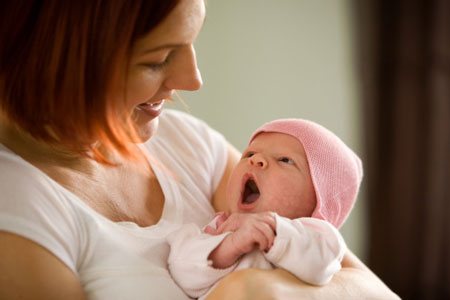
About the causes of the problem
It is not difficult to guess that the main source of pathology is calcium deficiency. Even at the stage of carrying the baby, the woman experienced its deficiency, because a lot of this mineral went into the fetus’s body. Despite the fact that many expectant mothers took multivitamins, including an important mineral, on the recommendation of their doctors, this did not protect their teeth from crumbling. At the same time, it is worth noting that some women have several teeth crumble after childbirth, while others do not have such problems. And in this case, heredity is a predisposing factor. If a woman’s parents had dental problems when they were young, then you shouldn’t count on strong teeth after the baby is born. Childbirth can be the climax that will lead to the crumbling of the masticatory organs. In this case, the pathology is explained by hereditary predisposition.
Another reason is the lack of regular proper oral care. Many mothers generally stop paying basic attention to themselves when the baby is born. They forget about the need to brush their teeth twice a day, rinse their mouth after eating, and soon the chewing organs will “protest” in response to this attitude towards them.
Another reason for the problem is the presence of concomitant diseases. If there is a relapse of chronic ailments, then the teeth can make themselves felt. Osteoporosis, diabetes, thyroid diseases, and arthritis also lead to crumbling. Stress is another provocateur of the problem. Lack of milk, restlessness of the baby, quarrels with the husband often provoke many pathologies.
More on the topic
Is it possible to have teeth removed during pregnancy?
What to do if there is no milk after childbirth?
When does a woman usually lose her belly after childbirth?
Anesthesia for dental treatment during pregnancy
Dental treatment during pregnancy
Bad habits can also lead to caries, breaking off pieces of healthy teeth. Women who restrained themselves from smoking during pregnancy begin to abuse nicotine again with the birth of their baby. Tobacco smoke contains many dangerous and destructive components. These substances remove calcium from the body and teeth. On top of that, a woman’s immunity after childbirth is reduced.
Third week after birth
If you still have discharge , then this week it should be insignificant. If this is not the case, talk to your doctor.
You may have had pelvic pain because the space between your joints has widened during pregnancy and childbirth. If the pain persists and is bothering you, talk to your doctor or midwife - they may refer you to a physiotherapist.
If you are breastfeeding, you may have a clogged milk duct . This will appear as a red spot on the chest. Check to see if your bra is too tight and make sure your baby empties the problem breast completely before you give him another. A warm bath, wrapping yourself in a flannel cloth and massaging the painful area will help relieve the problem.
Your baby's sucking will also help, so stick to your breast even if it's uncomfortable. Pumping is also useful. You can try another position during feeding, for example, “from the armpit”: place the baby under your arm, so that his head looks out from under your armpit, just at your breast.
What is snoring and why is it dangerous?
Snoring is not only an aesthetic problem, but also a medical one. The characteristic sound occurs due to the vibrational movements of the soft tissues of the pharynx (palate and pharyngeal wall) as a stream of air passes through them. The narrower the lumen of the pharynx, the more strongly a person snores.
If for some reason the distance between the walls of the pharynx narrows to a critical level, breathing stops. Apnea syndrome - partial cessation of breathing can occur several times a night. A person suffering from this disease snores loudly and intermittently. Periodically, snoring subsides, then increases with even greater force.
The consequences of apnea syndrome are not at all harmless. When breathing stops, the amount of oxygen entering the blood decreases. During pregnancy, this is fraught with fetal hypoxia and placental hypotrophy. A woman complains of headaches, a feeling of exhaustion after waking up, and fatigue.
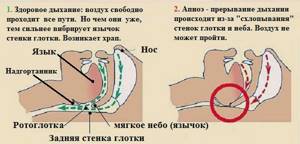
How does snoring occur?
